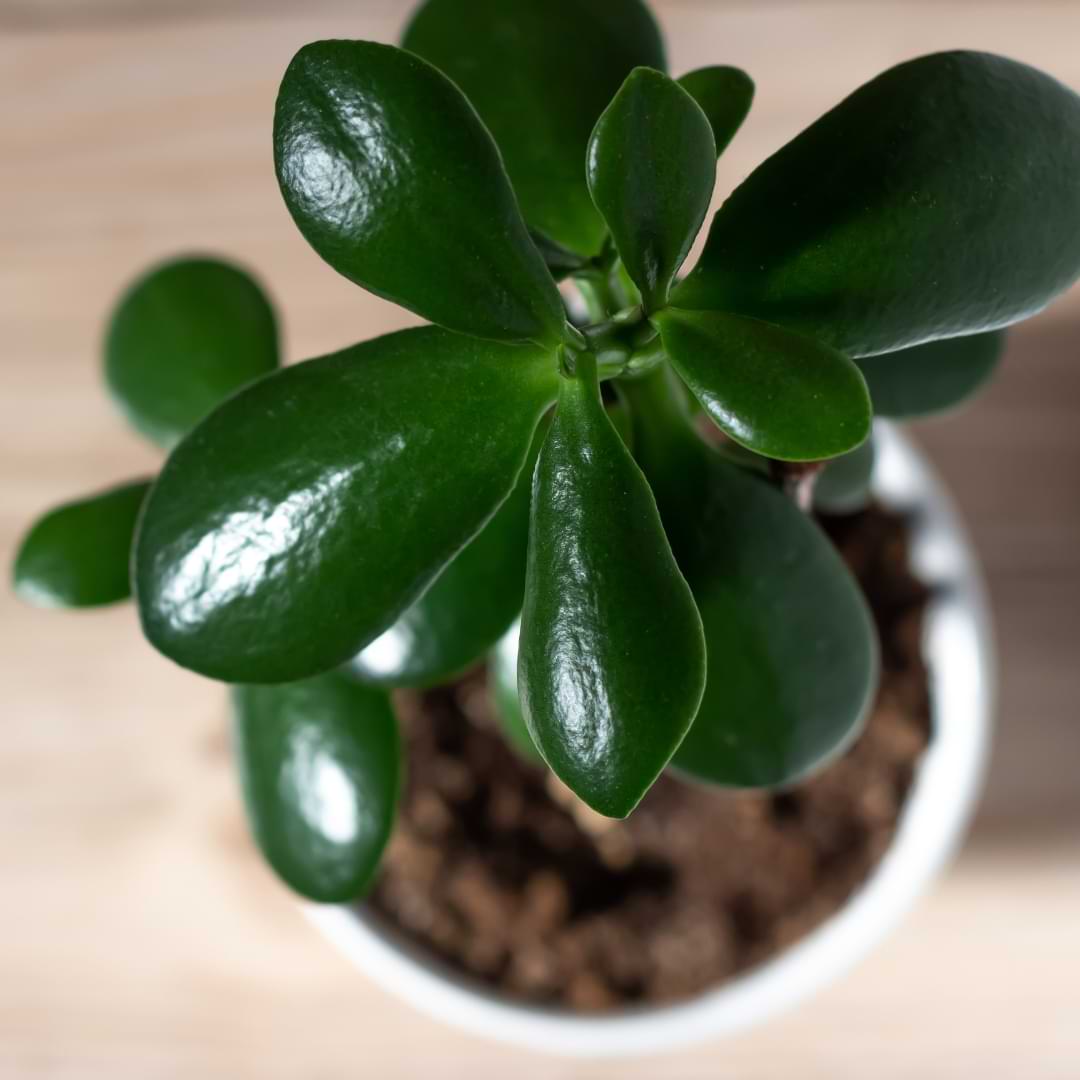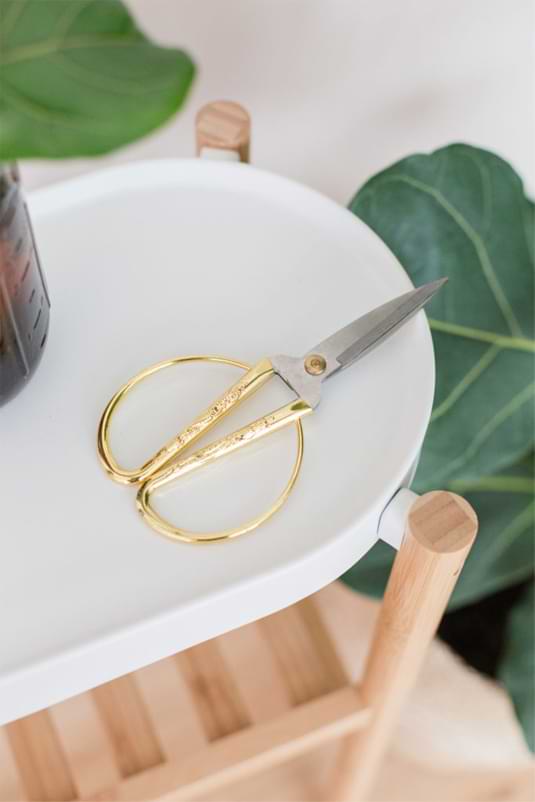Steps of how to propagate the jade plant, what you need to get started, care for your new plant, and problems that may pop up along the way.
The jade plant, or Crassula ovata, is commonly known as the lucky plant or money tree. This hardy succulent with small pink or white flowers requires minimal water and care, making it an easy houseplant to maintain.
As it’s thought that the jade plant brings good luck, homeowners enjoy having it in their homes or offices. Who can blame them? We could all use a little more luck from time to time!

Table of Contents
Jade Plant or Crassula Ovata Propagation
Starting a new plant from a stem or leaf cutting is just as easy as taking care of the plant itself! When propagating any plant, always start with a healthy part of the plant. For the jade plant, it’s ideal to work with a branch at least three to four inches long. Don’t worry if that’s not possible; there is a way to propagate by simply using a jade leaf.
Let’s go through the steps of propagation from start to finish, along with what you need to get started, how to care for your new plant, and problems that may pop up along the way.
How Do You Propagate a Jade Plant Quickly?
If you just can’t wait to duplicate your beloved jade plant, you might be wondering how you can propagate quickly. A young or small plant is called a plantlet, and it can take anywhere from two weeks to two months for plantlets to begin growing with no intervention from you outside normal care. Propagating from the stem cuttings rather than the leaves will provide quicker results if you’re hoping to speed things up.
What You’ll Need to Get Started
Other than the plant itself, you will need a few basic tools to get started.
- Tools (houseplant scissors, disinfectant, tweezers, etc.)
- Rooting hormone
- Jar or plastic pot
- Water or soil
When choosing your tools, be sure to use pruning shears that can cut with enough precision so they won’t harm your plant. Pick shears that feel comfortable and easy to control.
Propagate The Jade Plant From Leaves
When propagating from leaves, it’s vital to work with a healthy leaf, carefully cutting the leaf cleanly from the plant. It’s best to give your leaves a few days before continuing with the propagation process. Note: Not all plants can propagate from leaves only; this option is typically for succulents or semi-succulents.
Rooting in Soil
After your leaf has healed, simply lay it onto the potting mixture. If you have a mixture specifically for propagation, you can give your new plant a jump-start. Adding a rooting hormone to your water will increase rooting time and protect your new plants from toxins and bacteria. Water the leaf once you’ve laid it on the soil and then simply mist it until you see roots forming.
Rooting in Water
Rooting your jade leaf in water is possible, it just takes some more effort as it’s difficult for the leaf to keep an upright position. It’s easier to use a small juice glass for this method, and using mesh or toothpicks can help keep the leaf vertical. Despite being a bit more difficult, many plant lovers prefer this method because it’s easier to see the roots forming. Stay tuned for more info on rooting in water in later sections.
Propagating From a Branch or Stem Cutting
As mentioned, propagation from a branch or stem cutting will provide quicker results, especially when using the water method.
How to Take a Stem Cutting
Remember to use sterilized tools to make a clean cut of the stem, being careful to choose a section between two nodes (the bumps on the stem from where the leaves grow). Once you’ve chosen your branch or stem, remove the leaves on the lower part, leaving the leaves near the top. As with the leaf method, it’s important to pick a healthy sample and let it recover for a couple days before moving on. Laying the stem or branch in a warm, dry area lets it heal before propagating begins.
Rooting in Water
You already know that choosing a stem or branch for propagation is the quickest way to see results—the same is true for rooting that stem or branch in water. Although it might seem odd to think of growing a plant without soil, many plants, just like the jade plant, thrive in this propagation method!
Once your cutting has healed, simply place it in a jar or glass of water and place it in direct sunlight. The key to this method is changing the water once or twice a week and supplementing with a rooting hormone. When the roots have grown to 2 inches, you can remove them from the water and plant them in soil or leave them in the water if you’re going for a different look.
Rooting in Soil
If you prefer to root in soil, follow the same steps for cutting your sample and allowing it to heal. Once healed, lay it in a soil mixture for propagation and wait for your roots to show. Water sparingly. Some plant owners suggest misting rather than full watering as the plant develops, and once it’s ready, you can move it to the pot of your choice.
Care After Propagation
Remember, no matter which method you choose, it will take at least two weeks to see roots develop. When they’re ready to move to the next stage in their plant life, consider the following factors to ensure their continued success.
Light and Position
Jade plants thrive in direct sunlight. Keep in mind, if you’re moving your jade plant to more sunshine, it will take some time for it to get used to increased light. As long as your plant receives at least three to four hours of direct sunlight a day, it should be healthy and happy!
Temperature and Humidity
Not only are jade plants sun lovers, but they also enjoy warmer temperatures. They thrive in temperatures in the 70s but can be successful in temperatures just above or below that. They should not be exposed to frost, but as long as they’re kept dry, they will last in a variety of situations quite well.
Soil Type
The jade plant’s resiliency is also notable when discussing soil types. Due to its need to whisk water away efficiently, any soil mixture created for succulents is best. Jade plants like to be kept dry and don’t require wet soil.
Water
Speaking of being wet, don’t forget which family the jade plant belongs to. Succulents don’t need to be watered often; during the warm summer months, once or twice a week will do just fine. It’s important to make sure the soil is dry between waterings. A good rule of thumb is to pay attention to your plant’s leaves. If they begin to look dry and wrinkly, you’ve waited too long to water. Don’t overcompensate! Just provide some fresh water and check on your plant as the days go by.
Fertilizer
The fertilization of jade plants is an often debated question. Many people feel they need to be fertilized during their growing season, while others believe more fertilization is needed during the off-season. The best advice is to pay attention to your plant. If you see it struggling, add plant food or fertilizer to your routine.
Common Problems After Propagation
In general, too much or too little water can cause issues with your jade plant. If your propagation doesn’t take root, it might be due to the initial cut not healing before moving to the next step. Don’t forget to ensure your plantlet doesn’t get too much humidity, which can cause rotting.
Leaf Drop
We’ve mentioned a few times that the jade plant doesn’t need much watering. But it is possible to water it too little! Not watering enough can lead to a condition called leaf drop. Monitor your plant as well as your watering routine. If you notice your plant’s bottom leaves begin to wither, it needs more water. You want the top part of your soil to be dry, but it’s too much if that dryness exceeds the top inch. If you’re not sure you’ve watered enough, try a moisture meter to help you out. They’re easy to read and help you provide the best care for your plant.
Root Rot
Root rot is the opposite issue of leaf drop. This happens in overwatered conditions where the roots take in more water than the plant can use. If you notice root rot in your jade plant, immediately remove it from its pot, allowing the roots to dry, and remove all rotted roots before repotting.
FAQ: Propagate the Jade Plants
Can you grow a jade plant from a broken stem?
Yes. Simply allow the broken stem to heal as you would a normal cutting. Then follow the steps for propagation through either the soil or water method.
Are jade plants toxic to pets?
Sorry, animal lovers, but jade plants can cause issues for both dogs and cats. According to the ASPCA, jade plants are considered extremely harmful to animals; your pet may have symptoms from an upset belly to vomiting and more (gross, right?). Keep these plants up and away from your furry friends!
Propagating the Jade Plants Final Thoughts
With its low-maintenance and hardy demeanor, jade plants are a good beginner houseplant for new homeowners and a pleasant ray of sunshine for veteran plant lovers. If you are considering propagation as a hobby or giving plants to friends, this easy plant might be a good one to try!
To learn more about the jade plant and other helpful resources for your houseplants, join our online community and sign up for informational webinars.






